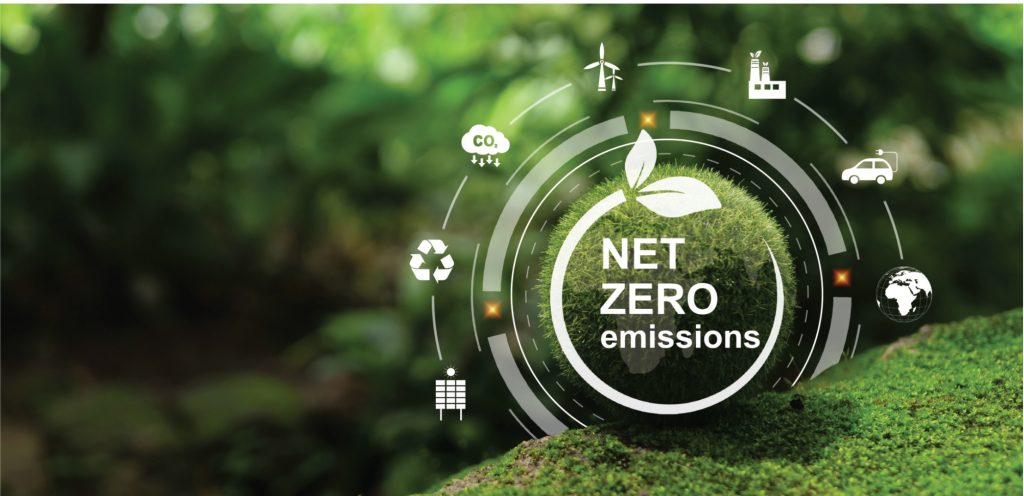What is a Renewable Energy Credit?
RECs are tradable instruments that have rights to the renewable (non-electricity) attributes of electricity generated from a renewable source. For example, when solar panels generate one MWh of electricity, their owners earn one REC to sell or own. A gas company, data center operator or other commercial or industrial power consumer, without direct access to renewable energy, could then buy that REC to show that one MWh of their electricity is renewable.
RECs are critical for companies to use as part of their net-zero programs and are well suited to address so-called Scope 2 emissions, which are defined as emissions from power purchased from third parties. REC Scope 2 usage is recognized by leading net-zero standards organizations like the Greenhouse Gas Protocol and others.
By enabling monetization of the environmental benefits from renewable energy, RECs are a valuable policy tool to incentivize renewable energy generation development. They also enable companies to manage their own emissions and advance their global sustainability commitments. Additionally, they have traditionally also enjoyed bipartisan political support in the U.S. and widespread cooperation internationally.
While RECs aren’t new to the US, we’re seeing surging demand both domestically and across the globe. In fact, one of our platforms saw over three million RECs traded in early 2024 – an 18% year-over-year increase. In addition, according to S&P Global, the U.S. REC market was valued at $13 billion in 2022, with projections reaching $40 billion by 2033.
RECs Have Historically Enjoyed Widespread Political and Grass Roots Support
REC markets were set up by states across the political spectrum more than 20 years ago to support important energy, environmental and economic goals. As a powerful policy tool, RECs support economic growth, help ensure energy independence and resilience and play a key role in meeting the country’s fast growing electricity demand from data centers, electric vehicles and other power consumers.
U.S. RECs are largely used by electricity sellers to meet renewable energy obligations, but we have recently seen strong demand from companies seeking to meet their energy transition commitments. In fact, issuance since 2020 is up by 44% on voluntary programs, which are those where no state or regional program compels participation, underscoring private sector and grassroots support for these instruments.
As an efficient market instrument, RECs are among a range of environmental commodities that have been supported on both sides of the political aisle. The Biden Administration’s Inflation Reduction Act provides incentives for clean energy solutions, and many conservatives back key elements of the law that promotes domestic production and energy independence. In fact, the first governmentally mandated REC program was signed into law by George Bush while he was Governor of Texas.
RECs are also experiencing widespread adoption outside the U.S., primarily through instruments issued following the International REC (I-REC) Standard. In the first half of 2024, I-REC redemptions grew 58% percent to 162 million.
Here are five reasons RECs are growing as a source for companies to attain emissions, sustainability, and business goals.
1. Renewable Energy Is Accelerating
Renewables now provide significant new power generation capacity worldwide – in fact, renewables made up more than 90% of new power installed globally in 2024. In the U.S., the growth in electricity demand for data centers to support AI adoption has furthered the ongoing boom in renewable energy development and renewed interest in legacy emissions-free solutions, including nuclear power, as well as growth in so-called transition fuel sources, including natural-gas plants.
2. Renewable Portfolio Standards are Getting Tighter
29 US states and Washington, DC, have implemented Renewable Portfolio Standards (RPS) to aid in the development and adoption of renewable generation. These standards require energy serving entities (such as local utilities) to procure enough RECs to meet a percentage of their total electric demand. Most of these programs ratchet the percentage of RECs requirement to meet the goals of the RPS over time.
As previously noted, the first such program was established in Texas in 1999. These policies have been widely supported as an effective policy tool for bringing additional renewables onto the grid, reducing emissions and creating jobs in the states that implement them.
3. RECs are Recognized as a Key Emissions Solution by Global Policy Organizations
RECs are recognized as an important tool for addressing companies’ Scope 2 emissions. While the growth of renewable power generation is accelerating rapidly, emissions-free power is not always available to power far-flung data centers globally. RECs are used to address the mismatch that occurs when companies have no choice but to source electricity from fossil fuel plants to power a given facility.
As mentioned, governments and companies’ use of RECS for this purpose is validated under key net-zero and emissions frameworks including the Greenhouse Gas Protocol, the Science-Based Targets Initiative, RE100 and other standards organizations.
4. Nuclear REC Demand
While renewable energy from solar, wind and hydro is growing rapidly, traditional sources of emissions-free electricity – notably nuclear power – are also experiencing a revival. Nuclear power generation is supported through the issuance of zero-emission or emission-free energy credits, which serve the same purpose that RECs do in renewable energy.
Recent private sector transactions, including an agreement between Microsoft and Constellation to restart a mothballed, undamaged reactor at Three Mile Island, as well as U.S. policy shifts – including renewed support for domestic nuclear projects – are accelerating this momentum.
5. Preferences to Match RECs Geographically are Driving New International Markets
The growth of electricity demand from data centers and other sources is a global trend. Company preferences to source RECs from generation projects located close to their facilities is expanding the REC markets globally. In fact, global redemptions of international RECs (I-RECs) and related instruments grew 40% year over year, based on February 2025 data from the Evident registry, reported by Argus Media.
How Companies Can Engage
I encourage Chief Sustainability Officers and corporate decision-makers to explore how RECs can support their climate goals. From managing Scope 2 emissions to enabling investment in renewables, RECs are a powerful lever for action and a value catalyst.
RECs are evolving to meet the needs of more sophisticated energy and emissions ecosystems. Market participants are embracing new applications, including hourly RECs, which enables buyers to match electricity use with renewable generation on a more precise basis.
As infrastructure and data improve, expect to see more innovations that make RECs even more effective. Now’s the time to lead – not lag – in building a cleaner, more resilient energy future. Supporting the global energy transition is not just good for the planet, it’s essential to build the leading companies of tomorrow.
Source link : View Article
Author
-

John Melby is CEO of Xpansiv, the technology behind environmental trading, and a widely recognized leader in energy and environmental markets. He serves on the Energy and Environmental Markets Advisory Committee to the U.S. Commodity Futures Trading Commission and is a frequent speaker at industry events.



